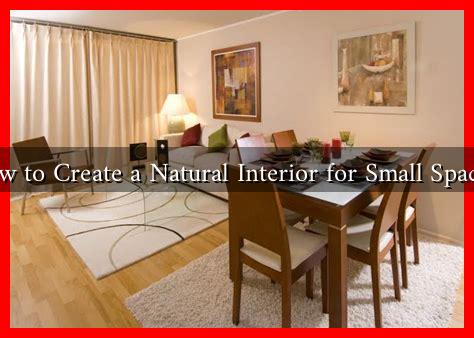-
Table of Contents
- How to Create a Natural Interior for Small Spaces
- Understanding the Concept of Natural Interiors
- Key Elements of Natural Interiors
- Design Strategies for Small Spaces
- 1. Multi-Functional Furniture
- 2. Open Layouts
- 3. Vertical Space Utilization
- Case Studies: Successful Natural Interiors
- Conclusion: Embracing Nature in Small Spaces
How to Create a Natural Interior for Small Spaces
Creating a natural interior in small spaces can be a rewarding endeavor, transforming a compact area into a serene and inviting environment. With the right approach, you can maximize the potential of your space while incorporating elements that promote a sense of calm and connection to nature. This article will explore effective strategies for achieving a natural interior in small spaces, supported by examples and insights.
Understanding the Concept of Natural Interiors
A natural interior design emphasizes the use of organic materials, earthy colors, and elements that reflect the beauty of the outdoors. This design philosophy not only enhances aesthetic appeal but also contributes to improved well-being. According to a study published in the Journal of Environmental Psychology, exposure to natural elements can reduce stress and enhance mood, making it particularly beneficial for small living spaces where one might feel confined.
Key Elements of Natural Interiors
To create a natural interior, consider incorporating the following elements:
- Natural Materials: Use wood, stone, and bamboo for furniture and decor. These materials add warmth and texture.
- Earthy Color Palette: Opt for colors inspired by nature, such as greens, browns, and soft neutrals. These hues can make a small space feel more expansive.
- Indoor Plants: Incorporate greenery to purify the air and bring life into your space. Plants like snake plants and pothos are low-maintenance and thrive in small areas.
- Natural Light: Maximize natural light by using sheer curtains or strategically placing mirrors to reflect light.
Design Strategies for Small Spaces
When working with limited square footage, it’s essential to be strategic about your design choices. Here are some effective strategies:
1. Multi-Functional Furniture
In small spaces, every piece of furniture should serve multiple purposes. Consider:
- Sofa Beds: A sofa that converts into a bed can save space while providing comfort for guests.
- Storage Ottomans: These can serve as seating, footrests, and hidden storage for blankets or books.
- Wall-Mounted Desks: A foldable desk can create a workspace without taking up valuable floor space.
2. Open Layouts
Creating an open layout can make a small space feel larger. Use furniture arrangements that promote flow and avoid heavy partitions. For example, a low bookshelf can act as a room divider while maintaining an open feel.
3. Vertical Space Utilization
Take advantage of vertical space by installing shelves or hanging plants. This not only adds visual interest but also frees up floor space. According to a report by the American Institute of Architects, vertical gardens can improve air quality and enhance the aesthetic of small interiors.
Case Studies: Successful Natural Interiors
Several designers have successfully implemented natural interiors in small spaces. For instance, the Tiny House movement has inspired many to create functional and aesthetically pleasing homes in minimal square footage. A notable example is the “Green Pod” by architect David McCauley, which features reclaimed wood, large windows for natural light, and a green roof that blends seamlessly with the environment.
Conclusion: Embracing Nature in Small Spaces
Creating a natural interior in small spaces is not only achievable but can also lead to a more harmonious living environment. By focusing on natural materials, maximizing light, and utilizing space efficiently, you can transform your compact area into a tranquil retreat. Remember to incorporate elements that resonate with you personally, as this will enhance your connection to the space. For more inspiration on natural interiors, consider visiting [Houzz](https://www.houzz.com) for a plethora of design ideas.
In summary, the key takeaways for creating a natural interior in small spaces include:
- Utilize natural materials and an earthy color palette.
- Incorporate multi-functional furniture to maximize space.
- Embrace open layouts and vertical space utilization.
- Draw inspiration from successful case studies in the Tiny House movement.
By following these guidelines, you can create a small space that feels expansive, inviting, and deeply connected to nature.




